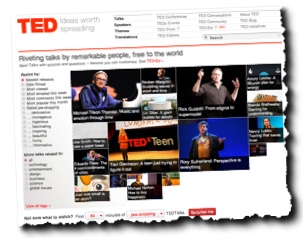Whether you’re making a speech before thousands of people in an auditorium or just two people in the small conference room, there are professionals who proclaim confidence is key. Stay poised – be bold – win your audience with self-confidence.
I’ve noticed a much different pattern with myself, though, when public speaking. It came up again just this week when I did a segment at the Ready to Launch conference in New York, sponsored by Entrepreneur.com and Canon. (That’s me on Tuesday in the image here … and my thanks to fellow-speaker Ivana Taylor of DIYMarketers for that picture.)

My job has always required a lot of speaking even when I was still pretty young. Before I was 25 I had done radio and standup television for UPI out of Mexico City. When I was in my 30s, I did workshops and speaking dates at trade shows like Comdex. And I’ve been doing business planning and startup workshops, and teaching, and some large-group speaking ever since.In spite of my decades of experience, however, I still have a fear of public speaking – and I wonder if this holds true for others. I still lose sleep the night before and worry about the outcome. Sometimes this type of anxiety can hold people back. With me, it’s just the opposite.
Newsflash: A little fear never hurt anybody
For many years, certainly for most of my career, there was a strong correlation between nervousness and doing well. Strange, I suppose, but true: the more nervous I got beforehand, the better I did. When I’d be tossing and turning all of the night before my talk, or had that embarrassing dry mouth and shaking hands at the beginning of a talk, I’d end up doing better.
Confidence seemed to be a bad sign. For years, for most of my career, if I was cool and calm then my performance was not as good.
Some of my anxiety wore off a little by the time I reached maybe 50 years old. But even now, with the big groups, the 1,000-seat auditoriums, I still get nervous and the stage fright or whatever that is tends to make me perform (as far as I can tell) better, not worse.
Ignore the nerves and jump right in
Sometimes, out of nervousness, speakers tend to prepare long preambles to an actual speech. While you may think it gives your time to gain confidence while trying to connect with an audience, chances are, your audience is tuning out. And by the time you get to the meat of your talk, no one may be listening.
I like this advice: Start in the middle. Start at the most interesting point. Choose powerful first words, with immediate interest. Grab your audience quickly. The worst ways to start a presentation (or any story) is “My name is ___ and I’d like to talk to you about…”
I recently listened (again) to JD Schramm’s speech on How to Tell Your Story for Impact. A Stanford business school communications lecturer, Schramm advises people skip the boring preamble altogether. He says:
Many times we feel like we have to do a lot of prefacing, but four minutes goes by quickly. If you spend two minutes on background, you’ve lost an opportunity to grab attention. Far better to leave the identifying bits until the second paragraph, or to the overhead PowerPoint image, or to the person charged with giving the introductions.
Schramm has also posted the speech on YouTube. Be sure you get to about 27 minutes into his talk where he starts talking about seven habits of concise storytelling and take note of all seven.
In the end, I think the best way to survive a fear of speaking is to just do it, over and over again. And really, a little nervousness keeps it real for both you and your audience. Do you agree?





 Yes, I gave into the horrible temptation, and even posted
Yes, I gave into the horrible temptation, and even posted
You must be logged in to post a comment.